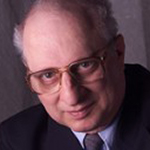August 4, 2010
Earth tremors in Anglicanism
The media reported that Ottawa's St. Alban's Anglican Church was disaffiliating from the Canadian Anglican denomination over the issues of blessing same-sex unions and ordaining homosexual clergy.
At the same time, the Pope issued an invitation to Anglican clergy to transfer their allegiance to Rome.
I put two and two together–and got five. The two events were not connected.
Rev. George Sinclair is the pastor at St. Alban’s. His parish voted in 2008 to leave, with 99% supporting the move. However, the action did not imply an interest in accepting the more recent invitation from the Pope. A better understanding of the developments requires a brief discussion of Anglicanism.
People are generally aware of the break between Henry VIII and the Roman Catholic Church resulting in the establishment of the Anglican Church. Anglicanism has since evolved in various directions.
The broad Anglicanism, called latitudinarian, accepts a wide range of views on such issues as the authority of Scripture, evolution, the meaning of communion, etc.
At one extreme, Episcopalian Bishop John Spong expounds a theology that is arguably atheistic.
In Canada, Anglicans are the second largest Protestant denomination, second only to the United. In the 2001 census, 9.6% of the population (2,035,496 people) were Anglican, down by 8.2% from the 1991 census.
There are at least two distinct tendencies sticking out of the latitudinarianism. These are the Anglican Catholic tradition (High Church) and the Evangelical.
The former, as the name suggests, is closer to Roman Catholicism, both doctrinally and in ritual. Evangelicals, on the other hand, prefer to follow what they see as Biblical literalism.
Sinclair and his congregation are in the latter camp. The Evangelical Anglicans have no interest in accepting papal authority. They do not pray to saints and do not accept Catholic views on Mary: that she was born without sin and that she was assumed bodily into heaven.
While some Evangelical Anglicans in Canada have disaffiliated from the Canadian Anglican body, their churches continue to see themselves as Anglican and accept Episcopal oversight from the Anglican Province of the Southern Cone, from Latin America. Their contention is that the acceptance of homosexual unions and the ordination of homosexuals is contrary to the Bible.
Sinclair has no problem with the ordination of women and sees as precedent that Evangelical Protestant denominations such as the Salvation Army have accepted the practice.
However, in Great Britain, where the same upheaval in Anglicanism is raging even more vigorously, the Evangelicals and Anglo-Catholics are as one in opposition both to openness to female ordination and to acceptance of homosexual clergy and blessing of gay unions.
So in pursuing the invitation from the Pope to Anglicans, my next step was to contact the Right Rev. Carl Reid, Bishop and Rector of Ottawa’s Cathedral of the Annunciation.
Bishop Reid indicated that his group, the Anglican Catholic Church of Canada, cut its ties with the larger Canadian Anglican body in 1977, over the issue of the ordination of women.
When the Church of England followed suit, in 1992 it also ended its communion with Westminster. Reid sees the ordination as the first step on a slippery slope to acceptance of homosexual clergy and blessing of same-sex unions. It was in response to a request from the Anglican Catholics that Pope Benedict issued his invitation.
The Anglican Catholic communion is small in Canada. Reid’s Ottawa church has some 120 members, with the communion having perhaps 7,000 in all of North America. However, like the Evangelicals, their strength is in the global South. “English is the seventh most common language” in the movement, the Bishop said.
Evangelical Anglicans and Anglican Catholics differ on doctrine and in ritual, but they have many values in common.
Sinclair and Reid bumped into each other at anti-abortion activities. This tendency is not unusual. At one point in the Netherlands there were Catholic and Calvinist political parties, but they found that they generally saw eye to eye on conservative politics.
While the Anglican Catholics are not unanimous in their desire to accept papal authority while maintaining their own traditions and rituals, it appears that the generality of their movement is accepting. The next question is the possible impact on the Catholic Church.
It appears that there are two conflicting implications for Rome. On the one hand, the stand of these Anglicans against a greater role for women and more openness to homosexuals will serve to strengthen the Catholic hierarchy’s resistance to internal dissent on these matters.
However, on the other hand, the adhesion of these Anglicans, with married priests, may put increased pressure on the institution of priestly celibacy in the Roman rite.
Disaffected Anglican Catholics that are not prepared to accept the Pope may stray back to the wider Anglican fold or form their own denomination.
There is already an Anglican Catholic congregation in Victoria, B. C. of that tendency. Other Anglican Catholics will go their own way.








